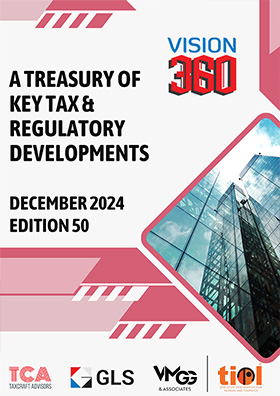India submits Update Report to UN on Climate Change
By TIOL News Service
NEW DELHI, JAN 03, 2025: INDIA'S 4th Biennial Update Report (BUR-4) to the United Nations Framework Convention on Climate Change (UNFCCC) was submitted on 30th December, 2024. The BUR-4 updates the Third National Communication (TNC) and contains the National Greenhouse Gas (GHG) inventory for the year 2020. The report also embodies information on India's national circumstances, mitigation actions, an analysis of the constraints, gaps, related finance, technology, and capacity-building needs.
In a post on social media, Union Minister for Environment, Forest and Climate Change, Bhupender Yadav, stated that India is leading by example in sustainable growth. These numbers reflect Prime Minister Narendra Modi's commitment to aligning economic progress with meaningful climate action, he added.
In 2020, India's total GHG emissions decreased by 7.93 per cent with respect to 2019. The emissions, excluding Land Use, Land-Use Change and Forestry (LULUCF), were 2,959 million tonnes of CO 2 e and net emissions of 2,437 million tonnes of CO 2 e with the inclusion of LULUCF. The energy sector contributed the most to overall emissions (75.66 percent), followed by the agriculture (13.72 percent), Industrial Processes and Product Use (8.06 percent), and Waste (2.56 percent). In 2020, India's forest and tree cover, along with other land use, sequestered approximately 522 million tonnes of CO 2, equivalent to reducing 22% of the country's total carbon dioxide emissions in 2020.
India's achievements in respect of the NDC targets :
- India has progressively continued decoupling economic growth from GHG emissions. Between 2005 and 2020, India's emission intensity of Gross Domestic Product (GDP) reduced by 36%.
- By October 2024, the share of non-fossil sources in the installed electricity generation capacity was 46.52%. Total installed capacity of renewable power, including large hydropower, is 203.22 GW and cumulative renewable power installed capacity (excluding large hydro projects) has increased 4.5 times from 35 GW in March 2014 to 156.25 GW.
- India's forest and tree cover has consistently increased and currently stands at 25.17% of the total geographical area of the country. During 2005 to 2021, additional carbon sink of 2.29 billion tonnes of CO 2 equivalent has been created.
Despite India's very low contribution to historical emissions and the current levels of global emissions, India has taken proactive actions to combat climate change in the context of sustainable development and its developmental aspirations. This is in light of India's national circumstances, reflecting principles of equity and common but differentiated responsibilities and respective capabilities (CBDR-RC), as enned in the UNFCCC and its Paris Agreement.















